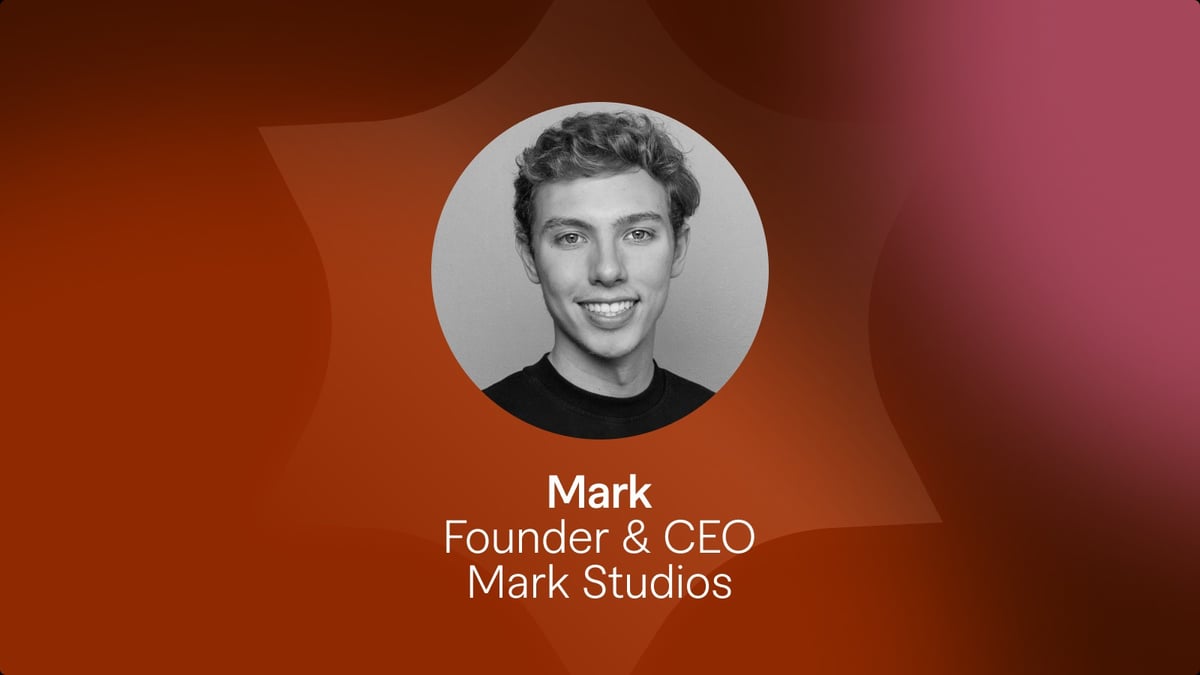I set out to make cool videos... I ended up building a $1M creative agency

What started as a side hustle during lockdown became a creative powerhouse, thanks to smart workflows, automation, and a team built on trust.
May 5, 2025

I never set out to build an agency. I just wanted to make cool videos, and it all started without launching a business plan. I just opened a Fiverr tab. In July 2020, the pandemic shut down my university, sent everyone home, and put my campus IT-assistant job on pause. YouTube ad revenue – my usual backup – wasn’t even covering coffee. One night, while doom-scrolling YouTube, I stumbled on a creator talking about making real money on Fiverr. I figured, Why not? I already had an account, so all I had to do was write up a single gig – “I’ll edit your YouTube video for $10” – and hit Publish. That was the entire strategy. A few days later, I got my first order. Then another one came in. By the end of that first week, I'd edited a gaming montage and a vlog – both on the same dented MacBook using Final Cut Pro. Each five-star review I received gave me more confidence. Within eight weeks, I had over twenty videos in the queue and had earned $2,500 in a single month – pretty much the same I was making at my IT-assistant campus job, but this time I was doing something I truly loved. That's when I realized this little side hustle might actually turn into something real.
Fiverr literally changed my life. The platform brings hot leads straight to my inbox every single day, allowing me to focus purely on my editing process instead of chasing clients. I honestly don't think I could've built this so quickly anywhere else, and I'll always be grateful for that.
When Success Starts Looking Like Burnout
But success wasn't simple. Within a few months, my Trello board was overloaded, and things got messy fast—missing assets, version-control nightmares, and anxious messages from clients at 2 a.m. It felt like burnout was right around the corner. I knew something had to change.
So, I paused everything for a weekend and mapped out my entire order and editing process from start to finish. I quickly noticed two major pain points: keeping track of client files and handling repetitive communication.
My solution? Automate and document everything.
I coded a simple Google Apps Script that organized every new order into a master Google Sheet and automatically set up a folder in Google Drive, neatly storing briefs, assets, and notes. Returning clients assumed I had an incredible memory, but in reality, I just had folders and a good system.
Suddenly, things started to feel manageable, and deadlines stopped feeling like roulette.
Hiring the First Pair of Extra Hands
By early 2021, even with good systems, I couldn't handle the growing workload alone anymore. I tested one editor – a fellow editor who had helped me with my YouTube videos in the past – on a single project, backed by a lawyer-written contract. The hand-off didn’t just work; it gave me my nights back.
Next, I created short Loom videos and quick checklists for every repeatable task. Today, Mark Studios runs smoothly on more than 30 SOPs, covering everything from color grading presets to standard "your draft is ready" messages.
To ensure top quality, I added a triple-layer quality control system: each video is first checked by a QA editor, then reviewed by a project manager, and finally signed off by me. This whole process usually takes less than 24 hours, and it's the reason we’ve maintained a 4.9-star average across 6,000+ orders.
From that first hire, the team grew into a fully remote group of talented editors, virtual assistants, and a full-time assistant, all helping Mark Studios serve more than 5,000 happy clients. Even though my team helps tremendously, I still handle most of the client conversations myself—relationships matter more to me than automation.
Daily Habits That Keep the Engine Running
A few habits have helped keep things running smoothly:
- Inbox First: Before breakfast, I clear out Fiverr notifications/inbox and check our team's WhatsApp chat. This keeps issues small and manageable.
- Friday Scorecards: Every week, we review key metrics – revision count, turnaround time, repeat-client rate, and customer satisfaction. If anything seems off, we tackle it immediately.
- Pricing for Quality: Higher rates help attract serious clients, pay for better editors and tools, and keep quality consistently high.
When the queue spikes and stress creeps in, I don’t meditate; I lean on the system and push harder for a day or two, knowing the process will hold.
One big misconception freelancers have about scaling up is thinking it instantly makes things easier. In reality, it magnifies every weakness you already have. If your workflow is shaky with five projects, it'll collapse under fifty. The key is documenting your process first, then bringing on help.
If you're currently overloaded with projects, here's the quick advice I wish I'd gotten earlier:
- Write it all down: Document every step clearly so the overwhelm decreases.
- Automate obvious tasks: Use quick responses, scripts, and no-code tools to reduce repetitive busywork.
- Delegate wisely: Give repeatable tasks to trusted freelancers with clear instructions, and refine as you go.
Scaling only works if you build strong systems and keep grinding consistently. Fiverr gave me the opportunity to build something bigger than myself, and I'm happy to share what I've learned. If you approach scaling the right way, you might find your overflowing inbox becoming the kind of business you never imagined – but wouldn't trade for anything.
From systems to scaling, here’s what it looks like in practice: Check out Mark’s Fiverr Pro profile here.


